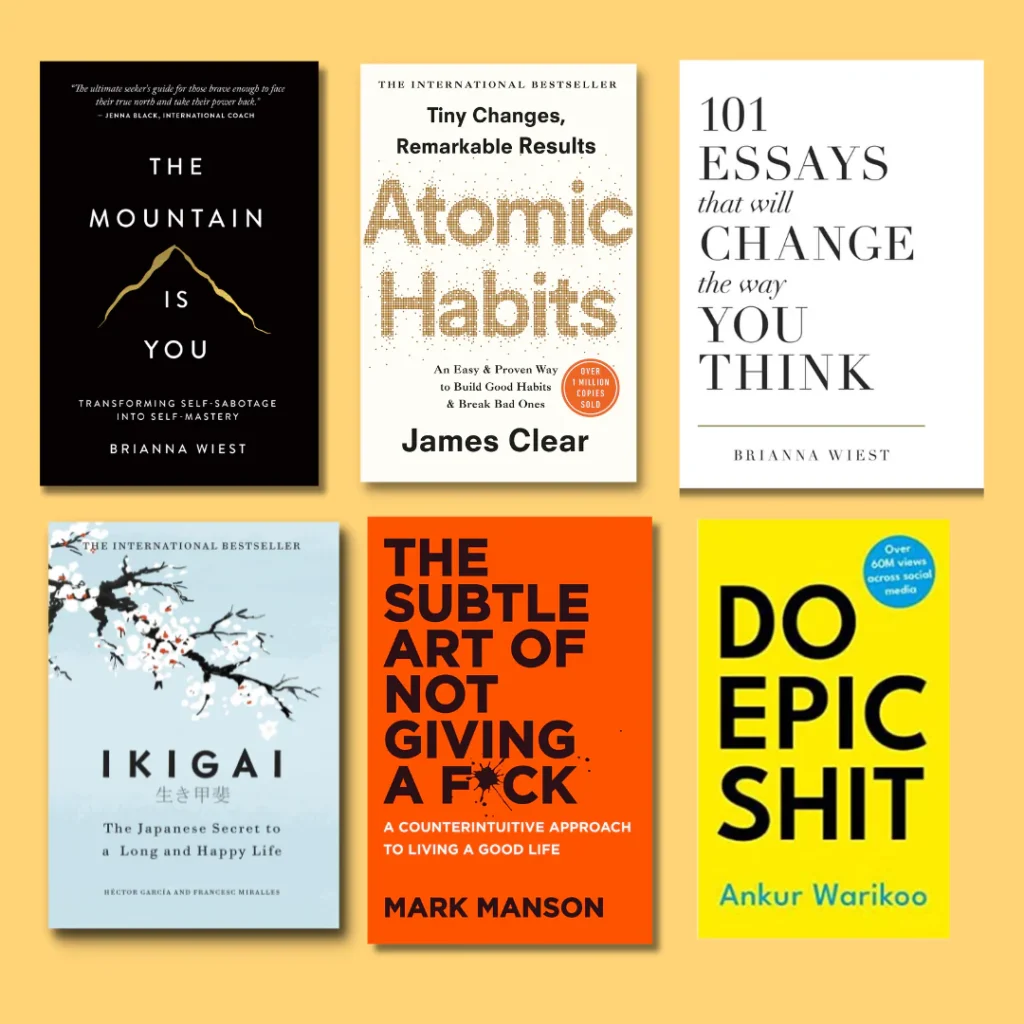AI is changing how we read, learn, and apply knowledge—especially when it comes to nonfiction books in personal growth and self-development. Classics like Atomic Habits by James Clear or The Magic of Thinking Big by David J. Schwartz hold powerful lessons, but unlocking their true value requires more than just reading. Leveraging AI as your learning partner can help you understand concepts deeply, retain ideas longer, and translate theories into meaningful action.
This guide offers practical AI-powered strategies, templates, and examples to transform every nonfiction book from passive reading into real personal growth.
Why Use AI to Learn from Nonfiction Books?
- Summarize & synthesize efficiently: Quickly capture key ideas and themes.
- Personalize learning: Tailor insights to your unique goals and life context.
- Solidify retention: Generate quizzes, flashcards, and reflection prompts.
- Take action: Design experiments, habit plans, and checkpoints for implementation.
- Save time: Compress hours of manual note-taking and analysis into minutes.
Step 1: Pre-Reading Discovery with AI
Before turning the first page, use AI to get oriented and primed.
Prompt Template:
“Give me a high-level summary of [Book Title] and its core concepts.”
Examples:
- “Give me a high-level summary of Atomic Habits by James Clear and explain the 4 Laws of Behavior Change.”
- “What are the main ideas in The Magic of Thinking Big by David J. Schwartz, and who would benefit most from reading it?”
AI tools like ChatGPT, Perplexity AI, or Claude can provide quick overviews, helping you approach the book with a clear mental map.
Step 2: Chapter-by-Chapter Understanding and Summarization
Break each chapter down to digestible insights and actionable lessons.
Prompt Template:
- “Summarize Chapter [X] of [Book Title] in [bullet points/a paragraph], highlighting actionable lessons.”
- “Paraphrase the main lesson from Chapter [X] of [Book Title] as if explaining to a beginner.”
Examples:
- “Summarize Chapter 2 of Atomic Habits in bullet points, emphasizing identity-based habits and ways to apply them.”
- “Paraphrase the main lesson of Chapter 4 of The Magic of Thinking Big about overcoming excuses.”
Step 3: Deepening Comprehension Through Clarification
Use AI to explore tricky concepts or counterintuitive ideas.
Prompt Template:
- “Explain [concept from Chapter X] using a real-life analogy or story.”
- “Why might [concept] be difficult to apply, and how can I overcome common obstacles?”
Examples:
- “Explain the ‘habit stacking’ idea from Atomic Habits with a simple, everyday example.”
- “Why do many people struggle to maintain new habits, and what solutions does James Clear suggest?”
Step 4: Personalizing Lessons to Your Life
AI can help turn theoretical wisdom into practical actions tailored to your goals.
Prompt Template:
- “How can I apply the ideas from Chapter [X] of [Book Title] to [your goal/situation]?”
- “Generate three concrete daily actions to practice the lesson from Chapter [X].”
Examples:
- “How can I apply the 2-Minute Rule from Atomic Habits to improve my focus at work?”
- “Generate three daily habits I can adopt from The Magic of Thinking Big to build confidence.”
Step 5: Designing Experiments and Reflection Practices
Put lessons to the test and track your growth.
Prompt Template:
- “Help me design a [number]-day experiment to practice the ideas from Chapter [X].”
- “Create journal reflection prompts based on the lessons in Chapter [X].”
Examples:
- “Help me design a 7-day experiment testing identity-based habit formation from Atomic Habits.”
- “Write two journal prompts to reflect on how I’m overcoming ‘excusitis’ as described in The Magic of Thinking Big.”
Step 6: Retention and Recall with Quizzes & Flashcards
Consolidate knowledge and ensure you truly learn.
Prompt Template:
- “Create five quiz questions to test my understanding of Chapter [X].”
- “Turn highlights from [Book Title] into spaced repetition flashcards.”
Examples:
- “Create five quiz questions on the Four Laws of Behavior Change from Atomic Habits.”
- “Generate flashcards from my highlights of The Magic of Thinking Big.”
Step 7: Synthesizing and Creating Action Plans
Bring all your notes and insights together for a comprehensive plan.
Prompt Template:
- “Summarize all my notes from [Book Title] into a one-page actionable plan.”
- “Turn lessons from [Book Title] into a 30-day habit-building challenge with daily check-ins.”
Examples:
- “Summarize my notes from The Magic of Thinking Big into a step-by-step personal development action plan.”
- “Turn lessons from Atomic Habits into a 30-day habit challenge with reminders and trackers.”
Example AI-Enhanced Learning Journey: Atomic Habits
- Pre-Read:
“What are the 4 Laws of Behavior Change from Atomic Habits, and give one example of each?” - In-Depth Chapter Summary:
“Summarize Chapter 2 of Atomic Habits focusing on identity-based habits and their application.” - Personal Application:
“How can I use the 2-Minute Rule to improve my morning routine?” - Experiment Design:
“Design a 7-day experiment to test identity-based habits in my daily life.” - Reflection:
“Write journal prompts to reflect daily on progress reinforcing my new identity.” - Recall Practice:
“Create quiz questions to review the Four Laws monthly.”
Example AI-Enhanced Learning Journey: The Magic of Thinking Big
- Pre-Read:
“Summarize key mindset shifts in The Magic of Thinking Big.” - Chapter Clarification:
“Explain ‘Cure Yourself of Excusitis’ and give three questions for overcoming procrastination.” - Personalized Plan:
“Create a 5-day confidence-building action plan inspired by the book’s strategies.” - Reflection Prompts:
“Write journal prompts tracking moments when I chose bold thinking over fear.” - Quiz Questions:
“Quiz me on the author’s main strategies to eliminate doubts and hesitation.”
Tip – You can use Notion to store all your notes and reflections while reading the book
Final Tips for Using AI As Your Personal Reading Coach
- Be specific in your prompts—reference chapters, ideas, or your personal goals for precise answers.
- Use an iterative approach—start broad, then ask follow-up questions to deepen insight.
- Combine AI-generated outputs with your own reflections and experience for richer learning.
- Use tracking and accountability tools to keep your new habits and lessons active over time.



